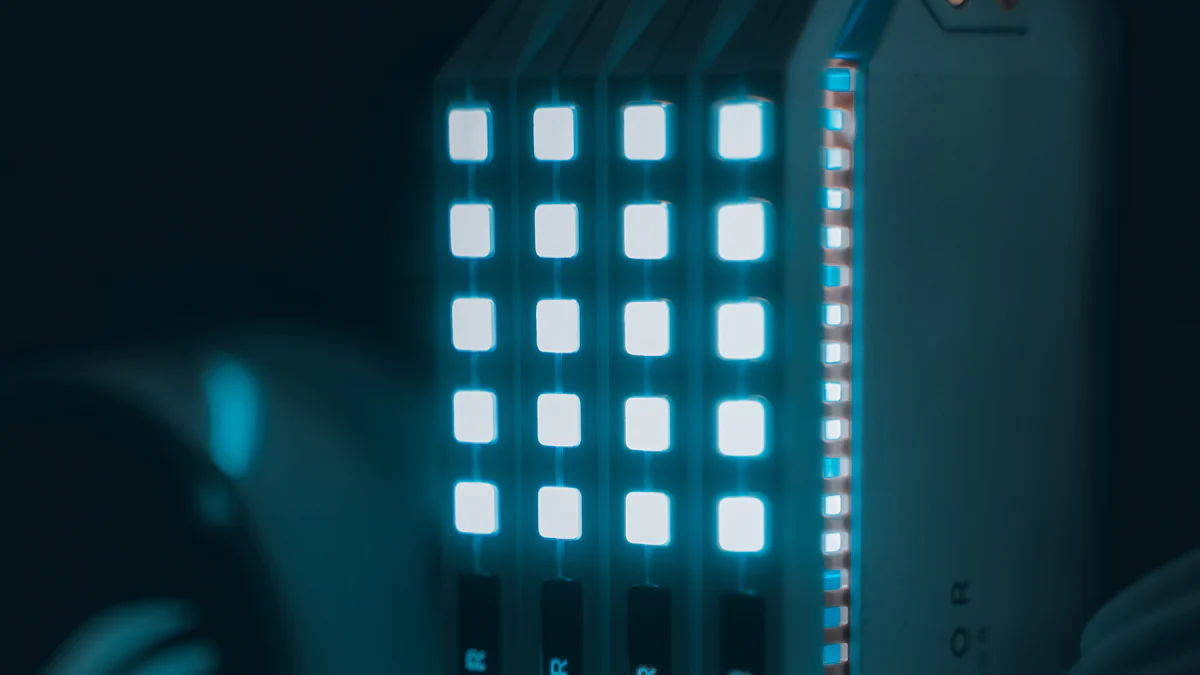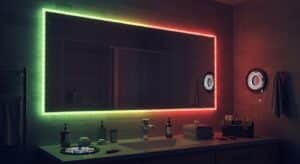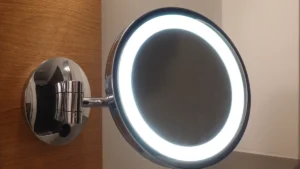
Installing LED module lights for channel letter signs can transform your signage into a vibrant and energy-efficient display. The installation process ensures that your letters shine evenly, creating a professional and polished look. Proper placement of the lights not only enhances visibility but also reduces energy consumption by over 75%, saving you money in the long run. With LEDs lasting up to 63,000 hours, you’ll enjoy durable and reliable illumination. By taking the time to install these lights correctly, you’ll achieve stunning results that stand out day and night.
Key Takeaways
Proper preparation is crucial: Conduct a site survey to ensure a clean, flat, and sturdy mounting surface for your channel letter signs.
Use the right tools: Gather essential tools like LED modules, power supplies, screwdrivers, and safety gear to streamline the installation process.
Prioritize safety: Always turn off the power supply before starting work, and use a voltage tester to avoid electrical shocks.
Position LED modules for even illumination: Space the modules evenly inside the letters to achieve uniform brightness and avoid dark spots.
Secure connections properly: Use electrical tape and ensure all wiring is insulated to prevent short circuits and ensure reliable performance.
Test thoroughly: After installation, power on the system to check for flickering or uneven lighting, making adjustments as necessary.
Regular maintenance is key: Clean the LED modules and inspect for faulty components periodically to extend the lifespan and performance of your signage.
Preparation and Tools Needed
Before diving into the installation process, it’s essential to prepare thoroughly. Proper preparation ensures a smoother workflow and minimizes mistakes. Let’s break it down step by step.
Conducting a Site Survey
Start by assessing the installation site. Look at the mounting surface where the channel letter signs will go. Is it clean, flat, and sturdy? A smooth surface helps the letters stay secure and aligned. Measure the area to confirm that the signage fits perfectly. Take note of any obstacles like uneven walls or nearby electrical outlets. These details will help you plan the installation better.
Check the lighting conditions around the site. If the area is dimly lit, your LED module lights will stand out more. However, in brightly lit spaces, you might need to adjust the brightness or placement of the LEDs for maximum visibility. Always ensure the site is accessible and safe to work on.
Essential Tools and Materials for LED Installation
Having the right tools and materials makes the job easier and more efficient. Here’s a checklist of what you’ll need:
LED module lights: Choose modules compatible with your channel letters. White LEDs work best if the letter faces are covered with colored vinyl.
Power supply: Most LED modules require a 12VDC power supply. Double-check compatibility before starting.
Screwdriver: Useful for securing components and making adjustments.
Wire stripper: Essential for preparing wires for electrical connections.
Electrical tape: Helps insulate and secure wiring connections.
Voltage tester: Ensures the electrical system is safe and functioning correctly.
Safety glasses: Protect your eyes during the installation process.
Ladder: Necessary for reaching higher mounting surfaces.
Mounting brackets or screws: Used to secure the channel letters and LED modules in place.
If you’re cutting or drilling into surfaces, you might also need a pencil for marking, a hand drill, and a hole saw drill bit for precise cuts. These tools are especially helpful when working with downlights or similar installations.
Safety Precautions During Installation
Safety should always come first. Before you begin, turn off the power supply to avoid electrical shocks. Use a voltage tester to confirm that no current is flowing through the wires. Wear safety glasses to protect your eyes from debris or accidental sparks.
When working on a ladder, ensure it’s stable and placed on a flat surface. Avoid overreaching while on the ladder to maintain balance. If you’re using tools like drills or saws, handle them carefully and follow the manufacturer’s instructions.
Keep your workspace organized. Loose wires, tools, or debris can create tripping hazards. If you’re unsure about any part of the process, consult a professional. It’s better to ask for help than to risk injury or damage.
By preparing thoroughly and following these steps, you’ll set yourself up for a successful and safe installation.
Mounting the Channel Letter Signs
Mounting your channel letter signs is a crucial step in the installation process. Proper mounting ensures that your signage stays secure and aligned, giving it a professional appearance. Let’s walk through the steps to prepare the surface and attach the letters effectively.
Preparing the Mounting Surface
Start by inspecting the mounting surface. Make sure it’s clean, flat, and sturdy. Dirt, grease, or uneven textures can weaken the bond between the surface and the channel letters. Use a damp cloth or mild cleaning solution to remove any debris. Allow the surface to dry completely before proceeding.
If the surface has cracks or irregularities, fix them before mounting. A smooth and stable base ensures the letters stay in place over time. For walls made of brick, concrete, or other rough materials, consider using a mounting bracket or backer panel to create an even surface.
Mark the placement of each letter on the wall. Use a measuring tape and level to ensure the alignment is straight. Double-check your measurements to avoid mistakes. This step is essential for achieving precise letter mounting placement, which directly impacts the overall look of your signage.
Securing the Channel Letters to the Surface
Once the surface is ready, position the channel letters according to your markings. Hold each letter in place and confirm that it aligns with the others. If everything looks good, secure the letters using screws, bolts, or mounting brackets, depending on the material of the wall and the design of the letters.
Drill pilot holes into the surface to make it easier to insert screws or bolts. This step also reduces the risk of cracking or damaging the wall. Attach the letters firmly but avoid overtightening, as this could warp the material or cause unnecessary stress.
For added stability, use silicone adhesive or another strong bonding agent along with the screws. This creates a dual-layer of security, especially for outdoor signs exposed to wind or weather. Wipe away any excess adhesive immediately to maintain a clean finish.
After securing all the letters, step back and inspect the alignment. Adjust any letters that appear crooked or uneven. Taking the time to perfect this step ensures your signage looks polished and professional.
Installing LED Module Lights

Installing LED module lights is a critical step in creating a bright and evenly illuminated channel letter sign. This process requires careful attention to detail to ensure the lighting looks professional and consistent. Let’s dive into how you can position and secure the LED module lights effectively.
Positioning the LED Module Lights for Even Illumination
Proper positioning of the LED module lights is key to achieving uniform brightness across your channel letters. Start by laying out the LED modules inside each letter. Place them in a way that ensures the light spreads evenly without creating dark spots or overly bright areas. A good rule of thumb is to space the modules evenly, keeping the distance between them consistent.
To make this process easier, use tools like a laser level or a measuring tape. These tools help you align the modules both horizontally and vertically, ensuring precision. As one expert suggests:
“To achieve a uniform and seamless display, you need a precise panel alignment and positioning. For this, you can use a laser level or measuring tools to ensure the LED panels are perfectly aligned both horizontally and vertically.”
When positioning the modules, consider the depth of the channel letters. If the letters are shallow, you may need to place the modules closer together to avoid uneven lighting. For deeper letters, you can space them slightly farther apart. Always test the placement by temporarily powering on the LEDs to check for any inconsistencies in illumination.
If your channel letters have colored vinyl faces, white LED module lights are the best choice. They provide vibrant and clear lighting that enhances the color of the vinyl. Adjust the placement as needed to ensure the light diffuses smoothly across the entire surface.
Securing the LED Modules in Place
Once you’ve positioned the LED module lights, it’s time to secure them. Use the adhesive backing that comes with most LED modules to stick them firmly to the inside of the channel letters. Before applying the adhesive, clean the surface to remove dust or grease. A clean surface ensures a strong bond and prevents the modules from coming loose over time.
For added stability, consider using screws or mounting clips. These provide extra support, especially for outdoor signs exposed to weather conditions. Drill small pilot holes if necessary to avoid damaging the channel letters. Attach the modules carefully, ensuring they remain aligned with your original layout.
After securing the modules, double-check their alignment. Power them on again to confirm that the lighting is even and consistent. If you notice any issues, make adjustments before moving on to the next step. Taking the time to perfect this stage will save you from having to redo the work later.
By following these steps, you’ll ensure that your LED module lights are positioned and secured for optimal performance. Proper installation not only enhances the appearance of your signage but also extends the lifespan of the LEDs, giving you a reliable and energy-efficient lighting solution.
Electrical Connections for LED Module Lights

Connecting the electrical components of your LED module lights is a vital step in the installation process. Proper wiring ensures your signage operates efficiently and safely. Let’s break this down into manageable steps to help you wire, power, and secure your LED system.
Wiring the LED Modules
To start, you’ll need to connect the LED modules. Most LED systems allow you to wire them in either a series or parallel configuration. Understanding these methods is crucial for creating a reliable circuit.
Series Wiring: In this setup, the current flows through each LED module sequentially. This method works well when you want consistent current across all modules. However, if one module fails, the entire circuit may stop working.
Parallel Wiring: Here, each LED module connects directly to the power source. This setup ensures that if one module fails, the others continue to function. It’s a popular choice for channel letter signs due to its reliability.
To wire the modules, strip the ends of the wires using a wire stripper. Connect the positive wire (usually red) from one module to the positive terminal of the next. Do the same for the negative wire (usually black). Use electrical tape to insulate the connections and prevent short circuits. If you’re unsure about which wiring method suits your project, parallel wiring is often the safer and more efficient option.
“Understanding the different ways to connect LEDs—whether in series, parallel, or a combination of both—is key to designing a circuit that best fits your project’s needs.”
Always double-check your connections before moving forward. A small mistake here can lead to uneven lighting or even damage to the modules.
Connecting the Power Supply to the LED System
Once the LED modules are wired, it’s time to connect them to the power supply. Most LED module lights for channel letters operate on a 12VDC power supply. Ensure your power source matches this requirement to avoid compatibility issues.
Follow these steps to connect the power supply:
Identify the positive and negative terminals on the power supply.
Attach the positive wire from the LED circuit to the positive terminal of the power supply.
Connect the negative wire from the LED circuit to the negative terminal of the power supply.
Secure the connections with electrical tape or wire connectors to prevent them from coming loose.
Before powering on the system, use a voltage tester to confirm that the power supply is functioning correctly. This step ensures that your LED modules receive the right amount of power, preventing overheating or underperformance.
“The second step in this guide on how to build LED screen is to connect all the necessary parts.”
If you’re working on a large sign with multiple circuits, consider using a distribution block. This device helps manage multiple connections and keeps your wiring organized.
Ensuring Electrical Safety and Compatibility
Safety should always be your top priority when working with electrical components. Start by turning off the power supply before making any connections. This precaution reduces the risk of electrical shocks.
Use a voltage tester to verify that no current is flowing through the wires. Wear safety gloves and glasses to protect yourself during the process. Keep your workspace clean and free of clutter to avoid accidents.
Check the compatibility of all components before installation. Ensure the power supply matches the voltage requirements of your LED modules. Using incompatible parts can lead to system failure or even fire hazards.
Finally, test the entire system after completing the connections. Power on the LED modules and inspect the illumination. Look for any flickering or uneven lighting, as these could indicate wiring issues. Address any problems immediately to ensure your signage performs flawlessly.
By following these steps, you’ll create a safe and efficient electrical system for your LED module lights. Proper wiring and connections not only enhance the performance of your signage but also extend the lifespan of your LEDs.
Testing and Final Adjustments
Once you’ve completed the wiring and secured the LED modules, it’s time to test your work. This step ensures that your channel letter sign looks flawless and functions as intended. Let’s go through the process of testing and making final adjustments to achieve the best results.
Testing the Functionality of the LED Lights
Testing the LED lights is a crucial step before finalizing the installation. Start by powering on the system. Observe how the lights illuminate the channel letters. Look for any flickering, uneven brightness, or areas that appear dim. These issues could indicate loose connections, faulty wiring, or misaligned LED modules.
If you notice any problems, address them immediately. For example:
Flickering lights: Check the wiring connections. Ensure all wires are securely attached and insulated.
Uneven brightness: Inspect the placement of the LED modules. Adjust their positions to eliminate dark spots or overly bright areas.
Non-functioning LEDs: Test the individual modules. Replace any that are defective.
“Careful operation during this stage ensures a long service life for your LED display,” as professionals often emphasize. Taking the time to test thoroughly now can save you from costly repairs later.
After resolving any issues, test the lights again. Repeat this process until the illumination looks consistent and professional.
Making Adjustments for Optimal Lighting Performance
Even after testing, you may need to fine-tune the setup to achieve optimal lighting performance. Small adjustments can make a big difference in how your signage appears.
Here’s how you can refine the lighting:
Reposition LED modules: If certain areas still look dim, move the modules slightly closer together. For overly bright spots, increase the spacing.
Adjust the power supply: Some power supplies allow you to tweak the voltage output. Lowering or raising the voltage can help balance the brightness across all modules.
Secure loose components: Check that all screws, adhesives, and mounting clips are firmly in place. Loose parts can affect the alignment and stability of the LEDs.
Step back and view the sign from different angles and distances. This perspective helps you spot any imperfections that might not be visible up close. Make additional adjustments as needed to ensure the sign looks great from every viewpoint.
Finally, conduct a long-term test. Leave the lights on for a few hours to confirm that the system operates reliably over time. This step helps identify any overheating issues or potential failures.
By carefully testing and adjusting your LED installation, you’ll create a stunning and durable channel letter sign. The effort you put into this stage will pay off with a professional-looking display that stands out day and night.
Maintenance Tips for LED Channel Letter Signs
Keeping your LED channel letter signs in top condition ensures they remain vibrant and functional for years. Regular maintenance not only extends the lifespan of your signage but also helps you avoid costly repairs. Let’s explore how you can clean and maintain the LED modules and inspect components to keep your signs shining bright.
Cleaning and Maintaining the LED Modules
Dust, dirt, and grime can accumulate on your LED modules over time, reducing their brightness and overall effectiveness. Cleaning them regularly is essential to maintain their performance and appearance. Here’s how you can do it:
Turn off the power: Always disconnect the power supply before cleaning to ensure safety.
Use a soft cloth or brush: Gently wipe the LED modules with a microfiber cloth or soft-bristled brush. This removes dust without scratching the surface.
Apply a mild cleaning solution: For stubborn dirt, mix a small amount of mild soap with water. Dampen the cloth with the solution and clean the modules carefully. Avoid soaking the LEDs or letting water seep into the electrical components.
Dry thoroughly: After cleaning, use a dry cloth to remove any moisture. This step prevents water damage and ensures the modules are ready for use.
Regular cleaning not only keeps your letters looking sharp but also ensures even illumination. Since LEDs can last up to 30,000 to 50,000 hours, maintaining them properly helps you maximize their lifespan. By taking a few minutes to clean your signage every few months, you’ll keep it looking professional and eye-catching.
“LEDs have a lifetime of up to 63,000 hours, which is 10 times longer than conventional bulbs.” Proper care ensures you enjoy this longevity without interruptions.
Inspecting and Replacing Faulty Components
Even with durable LED modules, occasional issues can arise. Inspecting your channel letter signs regularly helps you catch minor problems before they escalate. Follow these steps to keep your signage in excellent condition:
Check for dim or flickering lights: Dim or flickering LEDs often indicate loose connections or failing modules. Inspect the wiring and connections to ensure everything is secure.
Look for physical damage: Examine the letters for cracks, dents, or other signs of wear. Damaged components can affect the alignment and stability of the LEDs.
Test the power supply: Use a voltage tester to confirm that the power supply is delivering the correct voltage. A faulty power source can cause uneven lighting or complete failure.
Replace defective modules: If you find any non-functioning LEDs, replace them promptly. Most LED modules are easy to swap out, making repairs straightforward.
Routine inspections save you time and money by addressing issues early. LEDs are known for their long lifespan—lasting 10 to 20 years—but regular checks ensure they perform at their best throughout this period. By replacing faulty components as needed, you’ll maintain consistent brightness and avoid disruptions.
Maintaining your LED channel letter signs doesn’t have to be complicated. With regular cleaning and inspections, you’ll keep your signage looking its best while extending its life. A little effort goes a long way in preserving the quality and impact of your illuminated letters.
Installing LED module lights for your channel letter installation can seem like a big task, but breaking it into steps makes it manageable. From preparation to testing, each stage plays a vital role in ensuring your sign shines brightly and evenly. Prioritize safety, use the right tools, and test thoroughly to achieve professional results. If you feel unsure at any point, don’t hesitate to consult a professional. Regular maintenance will keep your sign looking vibrant and performing reliably for years. With proper care, your LED-lit sign will stand out and make a lasting impression.
See Also
Creating Stunning LED Neon Signs: A Complete Guide
Effective Installation Tips for RGB LED Strip Lights
Step-by-Step Guide to Wiring a LED Light Bar



